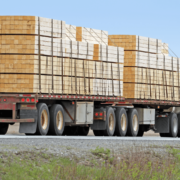
Transporting goods across long distances is an essential aspect of many industries, and drop deck trailers have become a common choice due to their versatility and capacity. Whether you’re moving heavy machinery, construction equipment, or oversized cargo, loading and securing your load on drop deck trailers requires careful planning and execution to ensure safety and efficiency. In this article, we’ll guide you through the steps to load and secure your cargo on drop deck trailers safely and efficiently.
1. Inspection and Preparation
Before you start loading your cargo, it’s crucial to inspect the drop deck trailer and make any necessary preparations:
- Check the trailer: Inspect the drop deck trailer for any signs of damage, such as rust, cracks, or worn-out components. Ensure that all lights, brakes, and tires are in good working order.
- Prepare equipment: Have the necessary equipment ready, such as ramps, forklifts, or cranes, to assist in loading your cargo onto the trailer.
- Verify weight limits: Determine the weight limits of your specific drop deck trailer, including the legal load capacity and axle weight ratings. This information is essential for load distribution and compliance with road regulations.
2. Plan Load Distribution
Proper load distribution is critical for both safety and efficiency. Distributing the weight evenly across the trailer helps maintain balance and stability during transit. Here’s how to plan your load distribution:
- Center of gravity: Identify the center of gravity for your cargo. It’s essential to load heavy items closer to the center of the trailer to prevent overloading the front or rear axles.
- Weight distribution: Ensure that the weight is evenly distributed between the front and rear axles. This prevents the trailer from becoming front-heavy or rear-heavy, which can lead to poor handling and safety risks.
- Axle spacing: Be aware of the axle spacing on your drop deck trailer. Some trailers have adjustable axles to accommodate different loads. Adjust the axle positions as needed to achieve the desired weight distribution.
3. Loading the Cargo
With your load distribution plan in place, it’s time to load your cargo onto the drop deck trailer:
- Use loading equipment: Depending on the size and weight of your cargo, use appropriate loading equipment such as forklifts, cranes, or loading ramps. Ensure that the equipment is in good working condition.
- Load heavy items first: Start by loading the heaviest items onto the trailer. Position them closer to the center of the trailer and secure them in place.
- Secure intermediate items: After loading the heavy items, place intermediate-weight cargo in the appropriate locations, maintaining an even weight distribution.
- Top it off: Finish loading by adding lighter items or securing any overhanging cargo. Keep in mind that the total height of the load should not exceed legal height restrictions.
4. Secure the Cargo
Properly securing your cargo is crucial to prevent shifting during transit and ensure safety on the road. Follow these steps to secure your load:
- Use straps and chains: Secure your cargo using straps, chains, or binders. Ensure that these restraints are in good condition and have the appropriate load capacity for your cargo.
- Use edge protectors: To prevent damage to your cargo and straps, use edge protectors at contact points where the cargo meets the straps or chains.
- Tighten restraints: Ensure that all straps, chains, or binders are properly tensioned and tightened. Check them periodically during transit to make any necessary adjustments.
- Secure loose items: If your cargo includes loose items or components, secure them using nets, tarps, or other appropriate containment methods.
- Check legal requirements: Familiarise yourself with local and national regulations regarding cargo securement. Ensure that your load complies with these regulations to avoid legal issues during transit.
5. Perform Final Checks
Before hitting the road, conduct final checks to ensure that your cargo is loaded and secured correctly:
- Check for movement: Shake or tap your cargo to ensure it is stable and won’t shift during transit.
- Inspect restraints: Double-check that all straps, chains, and binders are properly secured and tightened.
- Verify clearance: Make sure your load doesn’t exceed height or width restrictions. Use flags or lights if required by local regulations.
- Perform a visual inspection: Walk around the trailer and cargo to visually confirm that everything is secure and in good condition.
6. Safe Transportation
As you transport your cargo, maintain safe driving practices, including obeying speed limits, avoiding sudden maneuvers, and keeping a safe following distance. Regularly check your cargo during stops to ensure that it remains secure.
7. Unloading
When you arrive at your destination, follow a similar process in reverse to unload your cargo safely. Use appropriate equipment and ensure that your cargo is removed in the correct sequence to maintain balance and prevent accidents.
Conclusion:
Loading and securing cargo on a drop deck trailer is a critical process that requires careful planning and attention to detail. Proper load distribution, securing methods, and adherence to safety regulations are essential for a successful and safe transport. By following these steps and conducting thorough checks, you can ensure that your cargo arrives at its destination securely and efficiently, minimising risks and maximising efficiency in your transportation operations.










